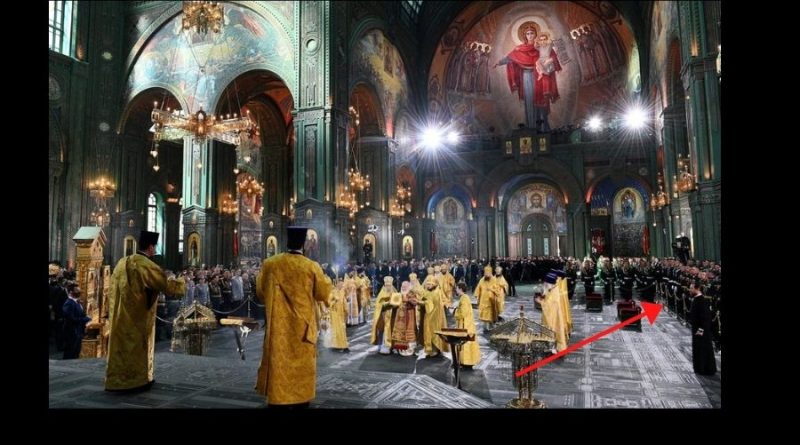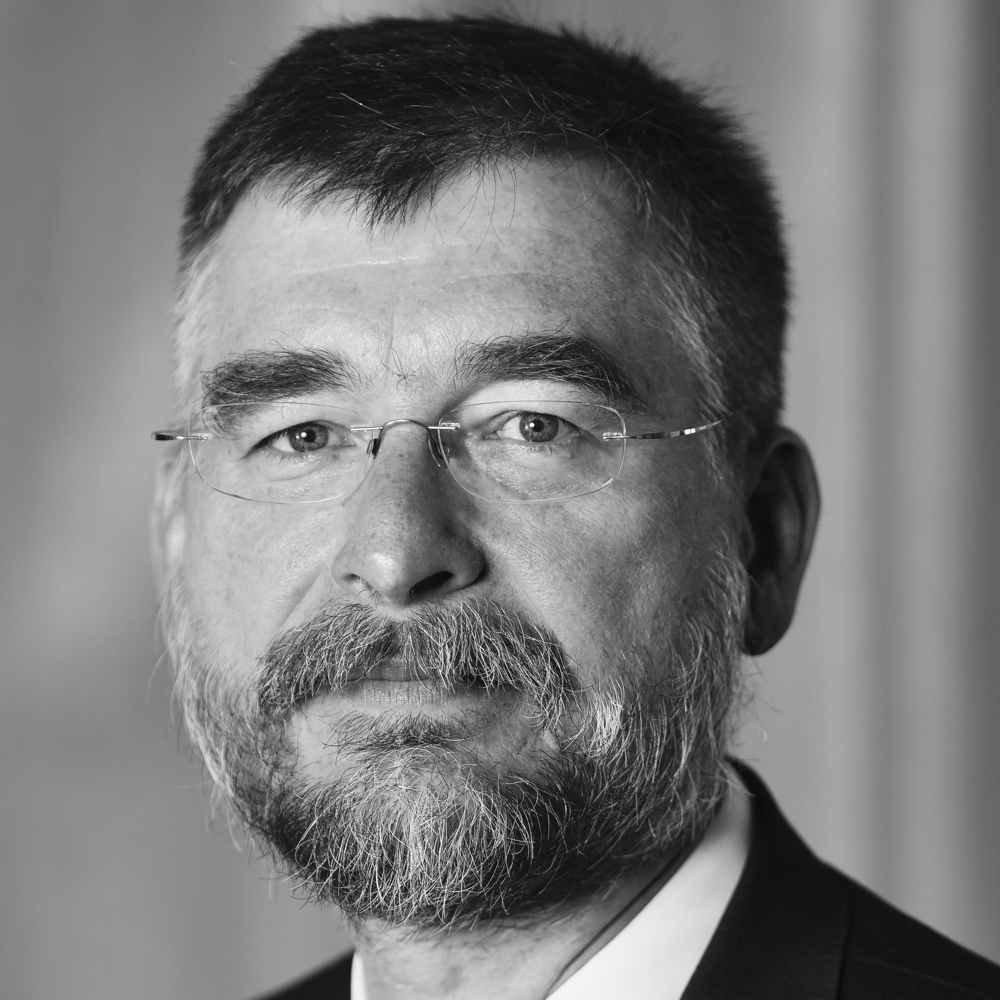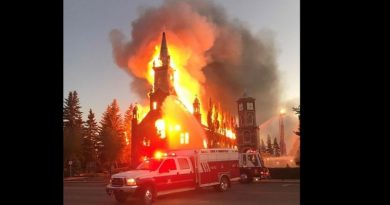Russia’s Orthodox Grand Strategy – The Mysterious Ties to the Military, Particularly Russia’s Nuclear Forces- “Protecting against (Western) satanic forces” Signs of the Great Prophecy Unfolding
For a number of years Mystic Post has called Our Lady’s message given to the Medjugorje visionaries about Russia – “The Great Prophecy” . The Queen of Peace said, “Russia will come to glorify God the most; the West has made modern progress but without God and act like their own creators.”
The significance to this prophecy about Russia is that it also ties Medugorje to Fatima. The visionaries have often said, “Medjugorje is the continuation and fulfillment of Fatima.” And there can be no doubt that Russia was the major geopolitical theme of Fatima. The Bishop of Fatima once said “The dominant theme of Fatima is Russia, Russia and Fatima our one.”
This article sheds light on how deeply tied the Russia Orthodox Church is to the Russian government and its military and what it means politically for USA and the world.
Putin will leave sooner or—as it seems—later. But a revanchist Russia, shaped by a revitalized Russian Orthodox Church, will outlast him.
Little stands in the way of Putin extending his presidential leadership until 2036 after a constitutional amendment was approved by Russia’s constitutional court earlier this week. If the amendment is validated in a referendum currently scheduled for April (as it is likely to be) and Putin chooses to stay, he will end up being one of the longest-serving Russian leaders, having been in power since 2000. He may have wanted to retire and exercise influence from behind the scenes, but it appears that dictators cannot retire peacefully. Putin is not an exception and, having conquered power in Moscow, he cannot give it up easily. As with tyrants in the distant past, he too is now perennially insecure and can nourish little hope of a peaceful life.
But focusing on Putin and his personal hold on power does little to inform us about Russia’s future politics and grand strategy. Whether he stays in the Kremlin or moves on to other pursuits may have a very limited impact on Russian foreign policy because his two decades at the helm have already shaped Russia in ways that will outlast him. Russia, that is, is not merely Putin’s.
One key aspect of the Russia we will continue to face—namely, the growing role played by the Russian Orthodox Church (ROC) in influencing the military and in particular its nuclear forces—is well described in a fascinating book by Dmitry Adamsky, Russian Nuclear Orthodoxy (recently reviewed in these pages). The book focuses on how the ROC went from providing support for a low-morale army to formulating a vision of Russia’s role in the region and world—and a robust rationale to retain effective nuclear forces as a key tool to defeat “satanic forces” and to maintain a strong Orthodox Russia. Putin may or may not be a true believer but the ROC has tied itself to the Russian state, molding its institutions and behavior. (On Putin, Adamsky carefully parses the evidence, implying that the Russian leader may be more than an agnostic KGB agent who uses religion for purely instrumental purposes; there’s some reason to think that he has actually become a true Orthodox believer. This would make him even more problematic, as he may see war as a welcome necessity and victory as achievable even in a nuclear confrontation.)
The implications of this development, however, transcend the bureaucratic fate of this or that institution or military branch. The revival of the ROC is leaving an imprint on the goals and means of Russian grand strategy. It seems that the traditional symphony of the Orthodox Church and the Russian state is tilting in favor of the former, bestowing upon it not just prestige, wealth, and a more exalted role for its clergy, but also enormous influence over the decision-making processes and doctrines of the state. It is not that the state authorities are using the Church instrumentally—though some individual leaders may do this—but that the Church is shaping the state and its key levers (including nuclear forces) to achieve its own temporal and eschatological goals. The ROC needs and wants a strong (and nuclear) Russia so that “the sovereignty of the Orthodox way of life against satanic forces” can be preserved.
The outcome is that Russian grand strategy is being shaped, and underwritten, by the ROC.
Four points, in particular, are worth considering.
First, the Orthodox Church has skillfully inserted itself into the military, a foundation of the Russian state, providing unity and support in the moment of its greatest weakness in 1991. But the effect is exponential: The ROC has given the seeds of civilizational unity to a country in disarray. After the dark decades characterized by the violent emptiness of communism, the Orthodox Church offered a renewed national purpose, motivating the military and the wider nation. The outcome is a civilizational unity that is much stronger than its preceding Soviet construct and, arguably, has a coherence that is increasingly missing in a divided West lost in a post-modern nebula of identities and self-proclaimed individual preferences.
As Adamsky describes it, Orthodox priests attached to particular military branches are akin to the old Soviet political officers, but the latter were hated and mistrusted while the former are welcome and deeply appreciated. The civilizational strength is being built from the bottom up, in submarines sent to distant seas with Orthodox priests in them, in Russian bases abroad accompanied by deployable churches, and in various other efforts, encouraged by Putin, to buttress the presence of the ROC across the military and society writ large. The resulting bet placed by Russian leaders may be that Russia, bolstered by the ROC, is much more resilient and stronger than its Western rivals—a hypothesis that many Western analysts, calculating economic data, demographics, or technological advances, do not share. But it does not matter who is right; it matters that Russian leadership may think that Russia is stronger than the decadent West and may act accordingly.
Second, the Church has also shaped the geographic vectors of Russian foreign policy. Enemies are to the south and the west. In the south, there is anti-Christian violence; from the west, civilizational decadence and moral turpitude. The southern frontier is with Islam, and the destruction of the Christian communities in the Middle East is a tangible symptom of the threat arising there. Russia, therefore, presents itself as the main protector of Christianity in this region, as Europe is powerless and the United States in a process of seeming retreat. On Russia’s western frontier, the menace is moral corruption leading to social and political decadence. The West is seen as a source of instability. Russia, then, is presented as the last bastion—the Third Rome—of civilizational strength. Note that in such a worldview China (the eastern frontier) does not appear as a prominent preoccupation. This does not mean that Moscow sees a blossoming alliance of sorts with Beijing, but only that China does not warrant the bulk of attention and resources. In brief, even after Putin, Russia will continue to focus and project power to her south and west, reflecting a threat assessment heavily influenced by the ROC
Third, the ROC thinks of a long term competition with Russia’s enemies, a sacred struggle with the Antichrist. The expectation is that the threats facing Muscovite territory and the civilization therein will exist for decades and Russia needs to be prepared for that. The lengthy time-horizon may, therefore, have an impact on how Russian leaders make their cost-benefit analysis: The goal is to create the conditions for the survival and ultimate success of the “Third Rome” and to do that they may be willing to accept short and medium-term costs in the expectation of a triumphant Orthodox Russia in the distant future. What the ROC then offers is the argument that immediate sacrifices, whether in the market or in the battlefield, are worthwhile for the higher good of an Orthodox victory. Imposing costs on Russia is less likely therefore to stir immediate domestic pressures on the Kremlin to alter its behavior. The goal, instead, should be to deprive Russia of the available means to be aggressive abroad—to limit and constrain Russia rather than to hope for a domestic political change of mind.
Lastly, related to the previous point, the revival of Russian Orthodoxy and its operationalization in Russian grand strategy is tied to a rebuilding of the myth of Russian victimhood. Russia is perennially under assault from the forces of evil—Poland, Napoleon, Hitler, the United States, the “West,” and, of course, the Islamic tribes on the southern frontier. These forces seek to destroy the civilizational core of Russia, grounded in the Orthodox faith. In this myth-making, even Stalin comes out as a supporter, albeit perhaps a reluctant one, of the ROC, a support that guaranteed Russia’s victory during World War II (the “Great Patriotic War”). As a perennial victim, Russia seeks revenge for the unjustified assaults on its peace-loving Orthodox nation. The debacle of the 1990s is seen not as self-imposed by a corrupt regime but as yet another example of foreign aggression, seeking to dismantle the Third Rome. A nation that seeks revenge is risk-prone because the will to hurt the perceived enemies is much greater than the fear of potential costs. Consequently, a revanchist nation is a great risk-taker, less amenable to a negotiated settlement, creating the conditions for a highly unstable and long-lasting confrontation.
Putin will leave sooner or—as it seems—later. But modern Russia, shaped by a revitalized Russian Orthodox Church, will outlast him, remaining a strategic problem.






